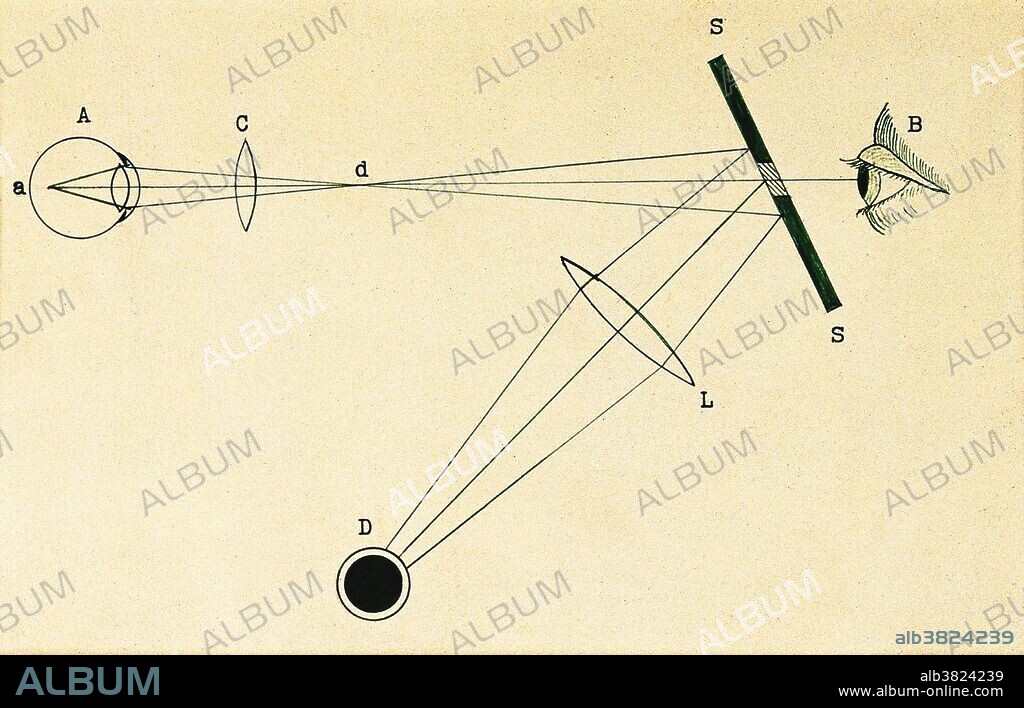alb3824239
Principle of Helmholtz's Ophthalmoscope, 1867

|
Add to another lightbox |
|
Add to another lightbox |



Title:
Principle of Helmholtz's Ophthalmoscope, 1867
Caption:
A diagram to show the principle of Helmholtz's ophthalmoscope, 1867. The optical arrangement ensured that the retina of the eye was illuminated by an almost parallel beam of light and that the beam of light was not cut off by the observer. A. The eye of the patient. B. The observer. SS. The mirror. L. and C. Lenses for giving an almost parallel beam of light. Hermann von Helmholtz (1821-1894) was a German physician and physicist who made significant contributions in several scientific fields, including the mathematics of the eye, theories of vision, color vision research, and in work on the conservation of energy, electrodynamics, and thermodynamics.
Credit:
Album / Science Source / Wellcome Images
Releases:
Model: No - Property: No
Rights questions?
Rights questions?
Image size:
3600 x 2301 px | 23.7 MB
Print size:
30.5 x 19.5 cm | 12.0 x 7.7 in (300 dpi)
Keywords:
DIAGRAM • DRAWING • EYE • EYEBALLS • EYES • GERMAN • GERMANS • HELMHOLTZ • HERMANN VON HELMHOLTZ • HISTORIC • HISTORICAL • HISTORY • ILLUSTRATION • ILLUSTRATIONS • LENS • OPHTHALMOLOGY • OPHTHALMOSCOPE • OPTHALMOSCOPE • PRINCIPLE • RETINA • RETINAE • RETINAS • STUDY • VISION
 Pinterest
Pinterest Twitter
Twitter Facebook
Facebook Copy link
Copy link Email
Email

